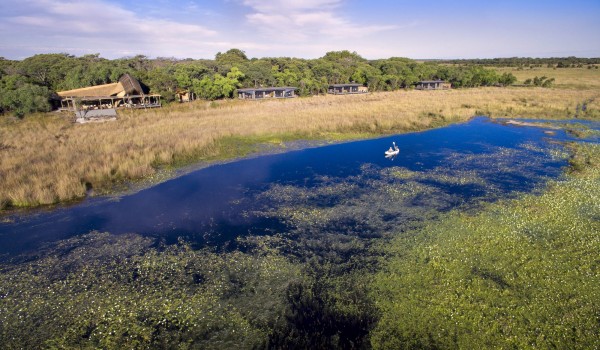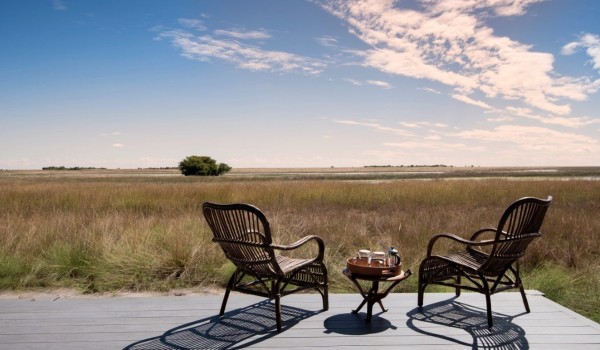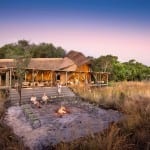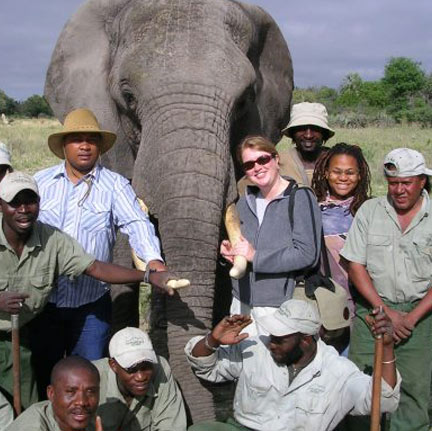Although the area had been gazetted previously, the current South Luangwa National Park was only born in 1972 and covers over 9000 sq km of bush with only the great Luangwa River slowly meandering along its rather sluggish course along the wide valley floor.
Liuwa Plains National Park
Why visit Liuwa Plains National Park ?
Liuwa Plain in western Zambia has one of the oldest conservation histories in Africa, dating back to the late 19th century when the King of Barotseland, Lubosi Lewanika, appointed his people as the custodians of the reserve. The result is a unique ecosystem where people and wildlife live together and where the priority is to sustainably manage these natural resources, to make this coexistence mutually beneficial for all. African Parks assumed management of the park in 2003 and immediately established effective law enforcement operations to keep both the communities and wildlife safe. It is only through engaging with local communities and establishing projects to improve their livelihoods that Liuwa can flourish.
Liuwa Plain is home to the second largest wildebeest migration in Africa but without the crowds experienced in the Serengeti & Masai Mara. The park’s growing wildebeest population of between 30,000 – 40,000 individuals migrate within the broader Liuwa system, moving between the numerous pans and following seasonal burns, joined by herds of zebra, tsessebe and lechwe, and predators such as wild dog, hyena, cheetah and lion. Species thought to be extinct in the park have started to make an appearance again including a breeding pack of wild dog, a herd of roan antelope and several elephant bulls which is a sign of a recovering ecosystem. The lion population of Liuwa, once reduced to one lioness (Lady Luiwa), is slowly growing as a result of reintroductions and the birth of cubs. Eland & buffalo have been reintroduced to the park and are thriving.
The park’s extraordinarily diverse birdlife – totalling 334 bird species – includes many rare and migratory species, including globally important populations of storks, cranes and other water birds. The arrival of the annual floods marks the arrival of a wealth of water birds and the vulnerable crowned crane and wattled crane are abundant, sometimes forming flocks numbering several hundred. Grassland species include Eastern clapper lark and pink billed lark, with both these subspecies considered to be endemic to Liuwa. Threatened water birds include the vulnerable slaty egret and the whiskered tern for which Liuwa provides the only breeding area in Zambia.
The vast natural landscapes of Liuwa are the epitome of wild Zambia, especially with the dramatic thunderstorms during the rainy season contrasting with the green and gold grasslands, which creates spectacular views, wildlife viewing and fantastic photographic opportunities.
Experience the historic and epic Kuomboka festival when the plains are flooded, where the king and his procession move to higher grounds by boat, accompanied by the pounding of drums, to Limulunga on the Eastern periphery of the floodplain. The word Kuomboka directly translates ‘to get out of water’ in the Silozi language and the arrival of the rains is the cause of much celebration and festivities
LOCATION
ZAMBIA INFO
Visa
A Visa is required for UK passport holders.
Health Requirements
No mandatory vaccinations are required.
Time Difference
GMT + 2 Hours
Flight Time
13hrs Indirect
NEWSLETTER SIGNUP
Keep up-to-date with the latest travel trends, inspiration for future trips and competitions to win luxury travel vouchers.
Subscribe

















